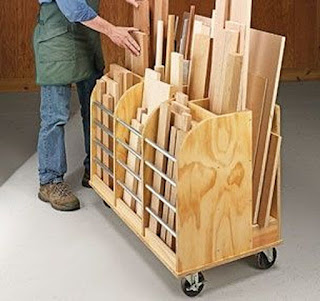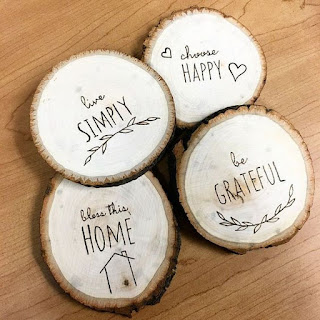DIY Personalized Wooden Wall Signs: A Beginner's Guide to Rustic Charm
Hey there, crafty friends! Are you looking for a fun, rewarding DIY project that will also add a touch of personalized charm to your home? Then you've come to the right place! Making your own wooden wall signs is easier than you think, and it's incredibly satisfying to see your creation hanging proudly on your wall. This guide is designed for absolute beginners â€" no prior woodworking experience necessary!
Gathering Your Supplies: Let's Get Started!
Before we dive into the actual crafting, let's make sure you have everything you need. Don't worry, you probably already have some of these things lying around your house. The beauty of DIY is repurposing and upcycling!
Essential Supplies:
- Wooden Board: You can find these at most craft stores, home improvement centers (like Home Depot or Lowe's), or even flea markets! Look for a piece that's the right size for your sign. Think about the size and shape â€" rectangular is classic, but you could get creative with a round or even a custom-cut shape.
- Sandpaper: You'll need a few different grits â€" a coarser one (like 80 grit) for initial smoothing and a finer one (like 220 grit) for a super smooth finish. Trust me, the sanding makes a huge difference!
- Primer: This is crucial for preparing the wood to accept the paint and preventing the wood grain from showing through. Choose a primer that's compatible with your chosen paint.
- Paint: Choose your favorite colors! Chalk paint is popular for its matte finish and vintage look, but acrylic paint works great too. Consider the style of your room when selecting your paint colors.
- Paintbrushes: Get a couple â€" a wider brush for painting the background and a smaller, more detailed brush for any lettering or designs.
- Stencils or Templates (Optional): If you're not confident in freehand lettering, stencils are your best friend! You can buy pre-made stencils or make your own from cardstock.
- Pencil: For lightly sketching out designs or lettering before painting.
- Measuring Tape & Ruler: Essential for accurate measurements and spacing.
- Protective Gear: Always wear safety glasses and a dust mask when sanding and painting.
- Wood stain (Optional): If you prefer a more natural wood look, consider using a wood stain before painting. You might want to consider a sealant to protect your stain, and also to protect your painted surface.
- Sealer (Optional): A sealant will protect your finished sign from scratches and spills, extending its life and making it easier to clean. There are many types of sealant available, so choose one suitable for your paint type.
- Hanging Hardware: Sawtooth hangers or picture wire are easy options. You will need a hammer and nails or screws. Alternatively, you can use strong adhesive hooks. Make sure to choose hardware appropriate for your wall type and the weight of your sign.
Preparing Your Wooden Board: The Foundation of Your Masterpiece
Okay, now let's get this wood ready for its close-up! This step is important for a professional-looking finish.
Cleaning and Sanding:
Start by wiping down your wooden board with a damp cloth to remove any dust or debris. Then, grab your sandpaper and start sanding! Begin with the coarser grit to smooth out any rough spots or imperfections. Once you've achieved a relatively smooth surface, switch to the finer grit for a super smooth finish. Sand in the direction of the wood grain for the best results. Remember to take breaks to avoid getting tired and to keep your work even.
Priming:
After sanding, you need to prime the board. This step is vital for achieving a uniform color and preventing the wood grain from showing through your paint. Apply a thin, even coat of primer, letting it dry completely according to the manufacturer's instructions. You may need two coats for optimal coverage, especially on darker woods.
Creating Your Design and Painting: Time for Creativity!
This is where the fun really begins! Unleash your inner artist and create a design that reflects your personality and style.
Designing Your Sign:
Think about what you want your sign to say or what image you want to create. Keep it simple for your first project. A short, sweet phrase or a simple design is perfect for beginners. If you're using stencils, carefully position them on the board and secure them with painter's tape.
Painting Your Sign:
Once your design is planned, start painting! Apply thin, even coats of paint to avoid drips and ensure even coverage. Let each coat dry completely before applying the next. For lettering, you might need multiple thin coats to achieve a clean, opaque look, especially with lighter colors on darker backgrounds. If you are using stencils, slowly lift them to avoid smudging or smearing the paint.
Adding Finishing Touches:
Once the paint is completely dry, you can add any finishing touches. This could be a sealant to protect the paint, a second layer of different colored paint, some decorative elements such as ribbon or twine. Let everything dry thoroughly before moving on to the next step.
Hanging Your Stunning Creation: Show Off Your Hard Work!
Congratulations! You've successfully created your personalized wooden wall sign! Now it's time to show it off.
Attaching Hanging Hardware:
Carefully attach your chosen hanging hardware to the back of the sign. Make sure it's securely fastened and centered. If you're using sawtooth hangers, make sure they're level. If you're using adhesive hooks, follow the instructions on the packaging and allow ample time to properly set before hanging the sign.
Hanging Your Sign:
Find the perfect spot on your wall and carefully hang your sign. Stand back and admire your handiwork! You’ve officially added a personalized touch to your space!
Commonly Asked Questions
- Q: What kind of wood is best for beginners? A: Pine is a great choice for beginners because it's readily available, relatively inexpensive, and easy to work with.
- Q: How long should I let the paint dry between coats? A: This depends on the type of paint and the conditions, but generally, you should wait at least 2-4 hours. Always refer to the manufacturer's instructions.
- Q: Can I use a different type of paint? A: Yes, you can use acrylic paints, chalk paints, or even stain. Just make sure you use a primer suitable for your chosen paint.
- Q: What if my paint drips? A: Don't panic! If you have a drip, let it dry completely. Then, gently sand it down with fine-grit sandpaper and repaint the area.
- Q: How do I clean my brushes? A: Clean your brushes immediately after use with soap and water (or the appropriate solvent for your paint type). Make sure they are properly dried before storing to keep their shape.
- Q: What if my sign is crooked? A: Before hanging, use a level to ensure your hanging hardware is properly attached and level. If you’ve already hung it and it’s crooked, take it down and readjust. You can also use small shims to level if necessary.
There you have it! You're now equipped to create your own beautiful, personalized wooden wall signs. Remember to have fun, experiment with different designs and colors, and don't be afraid to make mistakes â€" they're all part of the learning process! Happy crafting!
























